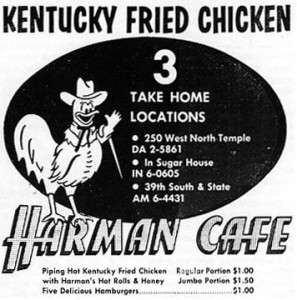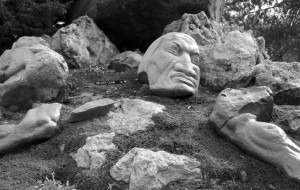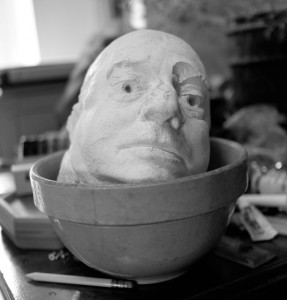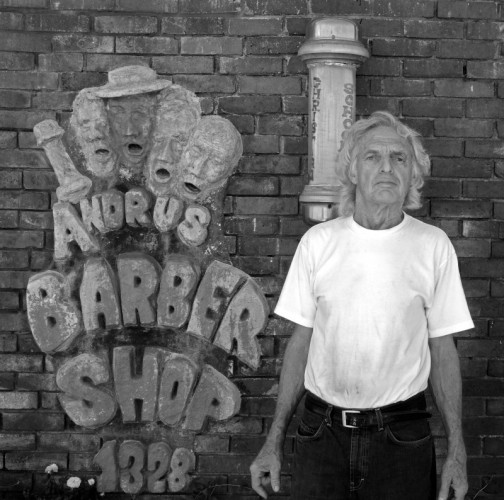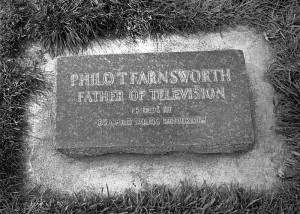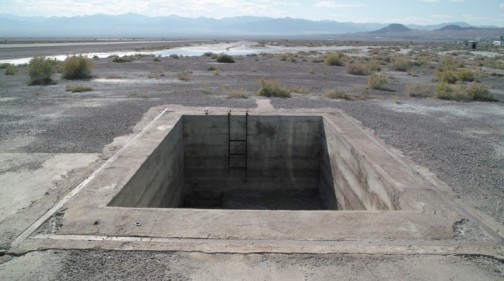First came the butterflies, then the hummingbirds, and now the Australians. Arriving by train Monday morning at three a.m. (midday in Brisbane), our friends Mike and Janet Poole are on what they call their “farewell to America tour.” While here, they will expect me to show them some local points of interest—which will be a challenge, since I almost never visit any of the better known tourist attractions, such as Temple Square and The Great Salt Lake. Instead, I’m morbidly fascinated with obscure landmarks such as the world’s first KFC franchise at 3900 South State Street.
It happened back in 1952 when Colonel Harlan Sanders came to town in a station wagon loaded with raw chicken, a pressure cooker and eleven secret herbs and spices. Local restaurateur Leon “Pete” Harman took one bite and a deal was struck. First order of the day was to design a menu, for which Harman turned to local commercial artist Pat Denner.
Later on it was decided to run with a caricature of Sanders instead of a chicken wearing a hat and a black Kentucky colonel necktie. Thus, an American icon was born—instead of, say, hatched.
In a recent email, Mike mentioned that he’d like to visit Gilgal Sculpture Garden, designed and created sixty-some years ago by the late stonemason Thomas Battersby Child, Jr. Billed as the only identified “visionary art environment” in Utah, the site has become increasingly popular in recent years, meaning that my own interest in Gilgal has waned. Instead, I plan to introduce my Australian friends to a living visionary artist, Ralph Plescia, better known simply as Ralphael. Ralphael tells me he once worked with Child, and I suppose if you look closely you can find some similarities in their work.
Not many tourists visit Ralphael’s studio at 1300 South State because—let’s face it—it’s pretty scary. Admission is free during visiting hours, but I’m going to insist that Mike produce a permission slip from his cardiologist before we venture inside.
What with Memorial Day approaching, my Aussie friends and I will pay our respects to Utah inventor Philo T. Farnsworth, who lies buried beneath a simple marker in Provo’s municipal cemetery. Hardly anyone ever lays flowers on Mr. Farnsworth’s grave, probably because he is reputed to be “the father of television.” As such, he has “a lot to answer for,” in the words of my librarian wife.
I also plan to take my guests to Wendover—not because they wish to gamble, which in Australia isn’t just legal but practically mandatory. What I wish to show them is what remains of Wendover Air Field, which, during World War II was home to the 509th composite bomb group. Among the surviving artifacts of that era is a concrete-lined pit, large enough to accommodate an atom bomb. Said bomb—or a facsimile of same—could be jacked from the pit into the bomb bay of a Boeing B-29. All this in preparation for the nuclear attacks on the Japanese cities of Hiroshima and Nagasaki.
What I find fascinating is that nowadays, one can purchase a bucket of Kentucky fried chicken in Hiroshima, Japan. What I find terrifying is that, thanks largely to television, we have a flimflam artist in the White House who consumes bucket after bucket of Kentucky fried chicken and whose greasy little fingers might very well touch off a nuclear war.
